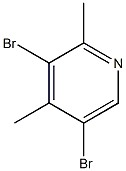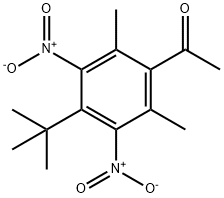5, 6-Dibromo-2, 3-dimethylpyridine(CAS#29976-20-3)
5, 6-Dibromo-2, 3-dimethylpyridine(CAS#29976-20-3)
Physicochemical properties
Appearance: Usually white to light yellow crystalline powder or solid.
Melting Point: Generally around 58 – 62°C, but the actual melting point may vary depending on factors such as sample purity.
Boiling Point: The boiling point is about 275 – 280°C, and decomposition may occur at high temperatures.
Solubility: slightly soluble in water, soluble in common organic solvents such as ethanol, ether, chloroform, methylene chloride, etc.
Stability: It is relatively stable at room temperature and pressure, but reactions may occur under conditions such as light, high temperature, strong acid, strong alkali or strong oxidant, such as the substitution reaction of bromine atoms.
Synthesis method
It can be synthesized by 2,3-dimethylpyridine as raw material, and under appropriate reaction conditions, it can be synthesized by bromination reaction with brominating reagents (such as liquid bromide, N-bromosuccinimide, etc.). This is usually done in the presence of a catalyst (e.g., iron powder, ferric tribromide, etc.), during which the bromine atom selectively displaces the hydrogen atom at positions 5 and 6 on the pyridine ring.
It can also be prepared from other compounds containing pyridine backbones through a series of functional group conversions and bromination reactions.
Fields of application
Pharmaceutical field: It can be used as an important pharmaceutical intermediate for the synthesis of biologically active drug molecules. For example, through further structural modification and reaction, other functional groups or groups with specific binding ability to biological targets can be introduced, so as to develop drugs with antibacterial, antiviral, antitumor and other activities.
In the field of materials science, it can be used to synthesize organic materials with special properties, such as for the preparation of optoelectronic materials, liquid crystal materials, etc. Its unique structure can impart specific optical, electrical, or liquid crystal properties to materials, and has potential applications in fields such as organic electronics and display technology.
Organic synthesis: It is an important intermediate in organic synthesis, which can be used to construct various complex organic molecular structures. Through nucleophilic substitution, coupling and other reactions with other organic reagents, different functional groups and structural fragments can be introduced, which provides a wealth of synthesis strategies and methods for organic synthetic chemists.








